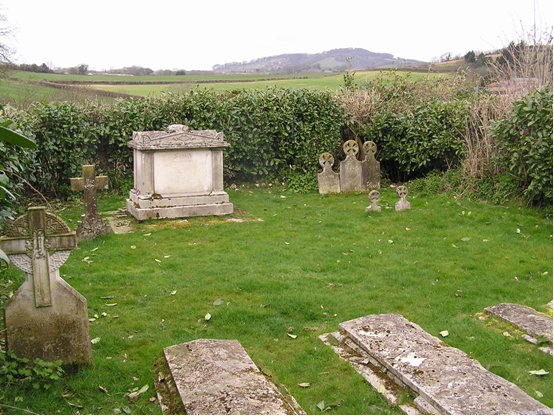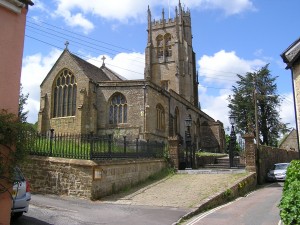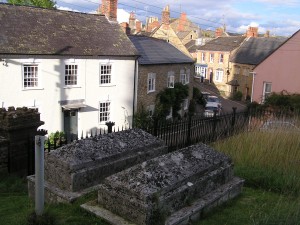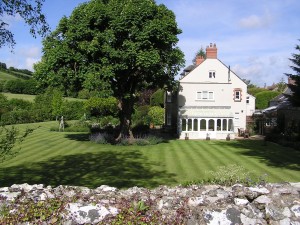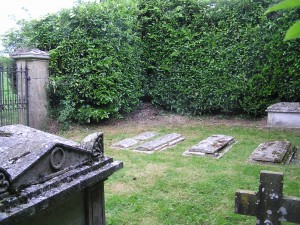RUPERT WILLOUGHBY is the custodian of his family’s private burial-ground at Knowle, in the parish of Beaminster, Dorset.
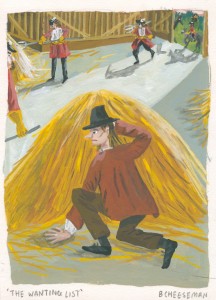
‘The Wanting List’, by Bridie Cheeseman, evokes James Daniel’s lucky escape at Knowle in 1685. Apart from his age, James was a natural recruit to Monmouth’s cause. During the Civil War he would, like most people in Beaminster, have been ‘zealous in the cause of the Parliament’. There was much resentment when a Royalist army under Prince Maurice of Bavaria, consisting of mutually antagonistic French and Cornish troops, was quartered there at the expense of the unwilling townsfolk, in gratitude for which, on 14 April 1644, the feuding Royalists set fire to the town and largely destroyed it. James Daniel’s house in Hogshill Street was among the losses.
The burial-ground was founded by James Daniel, a supporter of the Monmouth Rebellion, to commemorate his miraculous escape from capture by the Royalists and arraignment before the ensuing treason trials, the so-called ‘Bloody Assizes’ .
Today it is isolated, and somewhat exposed, in the midst of agricultural land. Historically, its situation was more pleasant, flanked by an orchard on the south side and by a meadow on the north. To judge from old photographs, it was shaded by the surrounding trees and was kept in immaculate order. It continues to command stunning views, across the valley to Stokewater Farm and beyond to Lewesdon Hill, the highest eminence in Dorset.
The burial-ground is all that remains to the family of their ancient estate, with which they have been connected since at least the fourteenth century. A John Daniel was a taxpayer at Melplash, in Beaminster Hundred, in 1332; another John acquired fields adjacent to Knowle in 1385.
By the 18th century, members of the family had ceased to be active farmers, practising instead as lawyers or doctors from their homes in the town. The farm was managed by a series of tenants. The small farmhouse at Knowle is of no historical or architectural interest. The original building burnt down in December 1847, apparently set alight by the dairyman, Thomas Wakely, after he had carefully removed and hidden his valuables. Wakely was subsequently convicted for an insurance fraud.
Frank Henry Daniel, heir to the senior line, had perhaps been destined to farm there, but he emigrated to the U.S.A. in 1888, at the age of 21. Accompanying him on the crossing from Liverpool was his 18-year-old second cousin, Ernest Daniel. While Ernest settled eventually at Detroit, Michigan, Frank established himself at Windsor, Ontario, a short ferry-ride across the Detroit River. By 1917 he was Chief Clerk to the Detroit and Toledo Shore Line Railroad, an outcome that could not have been predicted for the heir to Knowle. By an odd coincidence, the cousins both died in June 1952. As Ernest had never married, and as Frank’s only child was a daughter, they were the last known males of the Daniel family.
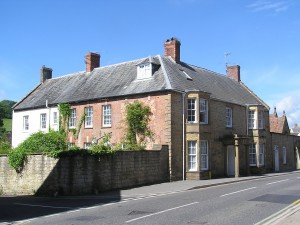
Daniel’s House in Hogshill Street, Beaminster. There is no record of it before ‘Sedgemoor’ James (who paid tax on its three hearths in 1662-4), but it had probably always been integral to the Knowle holding. James had had to rebuild his house in the 1650s, after it had been destroyed in the Great Fire of 1644. Elements of his work are thought to survive under later accretions. In the early 1700s James’s son John added the present rear wing of the building (seen in the left of the picture), for which expensive ‘header’ bond was used.
Frank was 70 years old when he made his single return visit to England, accompanied by his wife Ethel and by Ethel Marion, their only daughter. They sailed from Quebec in The Empress of Britain, arriving at Southampton on 19 August 1937. Marion (1903 – 1974) never married and spent her entire life in Windsor. She inherited the family property in Beaminster but in 1956 she instructed her English solicitors, Kitson and Trotman, to sell it. The lots included not only Knowle Farm but also Daniel’s House in Hogshill Street, her father’s childhood home, where the family had lived since time immemorial. However, the burial-ground was not included in the sale. The freehold had already been conveyed by the family to the Church in 1858, as a preliminary to its consecration, which was pronounced by the Bishop of Salisbury in 1860.
Since the sale of Knowle Farm in 1956, female-line descendants of the family have continued to care lovingly for the site, reserving their rights of burial there and of access across the adjoining farm. By a conveyance dated 22 January 2002, pursuant to a Pastoral Measure signed by the Queen herself, the freehold of Daniel’s Knowle was restored to their representative, Rupert Willoughby, in order to safeguard its future. The twenty-first generation of the family to be associated with Knowle, he is committed to repairing and maintaining the site, the restoration of which has been undertaken by Bowditch Countryside Management.
Visitors are advised that access is by permission only. They are asked to respect the privacy of the landowner as well as the sacredness of the site, and to avoid any contact with the fragile tombstones. Enquiries should be addressed to RupertWilloughby@btinternet.com.
THE DANIELS, originally yeoman farmers, are a very ancient Beaminster family. Their association with Knowle Farm can be traced back to the Middle Ages. In 1385, the farm seems to have belonged to a John and Christina Daniel, for in that year the couple acquired some further acres from the adjacent manor of Parnham.
Generations of Daniels were buried either outside, or within, the parish church. In Tudor times, they were commemorated there by a marble tombstone (now lost). However, like many in Beaminster, they were soon to embrace Puritanism. By the middle of the seventeenth century, they were often far from happy with the way things were conducted in St Mary’s.
James Daniel, who ran the farm at Knowle, was born in 1615, and became an Attorney. In his religion, James was stubbornly nonconformist. In 1684, he and his sons were reported by the churchwardens ‘for not frequenting their parish church at divine service’. James must have felt keenly affronted, for, on 11 June 1685, with other Beaminster dissenters (but unsupported by his sons, who were under age), he enlisted under the ‘Blue Flag’ of the Duke of Monmouth on his landing at Lyme. Aged about 70, he was present at the subsequent battle of Sedgemoor (6 July 1685), in which the forces of the pretender were soundly defeated by the army of King James.
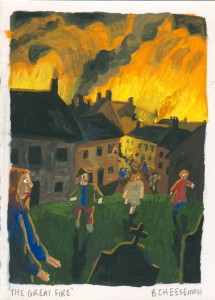
‘The Great Fire’, by Bridie Cheeseman. The view is from Beaminster churchyard. The cataclysm occurred on 31 March 1781, when ‘Sedgemoor’ James’s grandson James, Attorney and Coroner for Dorset, suffered disastrous loss. Daniel’s was one of eight houses on the south side of Hogshill Street which are said to have been ‘utterly consum’d’. This was not entirely true, as the handsome rear wing of the house, dating from his father’s time, avoided total destruction.
The story goes that, having returned to Beaminster with a price on his head, Daniel shut himself away in a chamber of his house. (The original building, on Hogshill Street, was substantially altered after a fire in 1781, but its successor is known to this day as ‘Daniel’s House’.) This was a rather obvious hiding-place. He is therefore said to have prayed earnestly for guidance, and to have been answered with the advice that he ‘Flee to the West’. Thus inspired, Daniel clambered over his back wall into the garden of a cottage in Tanyard, hastened out of the town and made his way to Knowle (about a mile away to the south-west), where he hid himself under a pile of straw in his barn.
The King’s troops soon arrived at Daniel’s House, where they conducted a thorough, but fruitless search. Acting upon information as to his probable whereabouts, they then pursued him to Knowle, burst into the barn, and searched it all over, even stabbing the straw with their bayonets in the expectation of flushing out the fugitive.
Unaccountably, the soldiers failed either to discover or harm their quarry. How he managed in the ensuing weeks to avoid arrest or imprisonment is equally unclear. The other townsmen who had been implicated in the Rebellion had presumably stayed away or lain low, and were probably to continue to do so until the promulgation, the following March, of a General Pardon. The Beaminster men who were caught and tried at the ‘Bloody Assizes’ that autumn were respectively bound over and transported to Barbados (and the remains of less fortunate victims were hung from the tower of the parish church); but there is no evidence of any report that James was ‘wanting from home’. It is possible that the local constables had been dissuaded from reporting the old man out of respect for him or sympathy with his beliefs, or perhaps because they had been heavily bribed by the family.
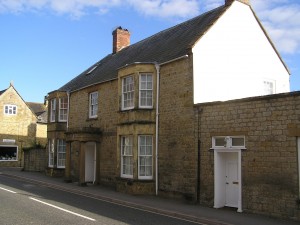
Daniel’s House from the west. During the Great Fire of 1781, the ‘Greater part of the Goods belonging to the Inhabitants’ is said to have been saved before the buildings themselves were consumed. James Daniel, the Coroner, subsequently rebuilt the present front range of Daniel’s House, and was careful to equip the new building with a tiled roof in place of a thatched one. In 1796, the property was described as a ‘Dwelling House Barn Barton Grange and Orchard with the appurtenances situate in Hogshill Street’.
James was convinced that he had been spared from a number of unpleasant alternatives by divine intervention. He therefore resolved to set aside the site of the barn as his and his family’s place of burial. There it was that he was buried on 11 May 1711, following his death at the age of about 96, though local tradition generously credits him with being a centenarian.
James Daniel has left many thousands of descendants, but the right of burial at Knowle seems always to have been reserved for the senior line of his heirs and their close relatives by marriage. James’s grandson and namesake followed him into the legal profession and became one of the coroners for Dorset, but the coroner’s brother John, ‘celebrated surgeon of this town’ (who is oddly buried not at Knowle but in the churchyard), began in 1743 a medical tradition in the family which continues to this day. (For more about John, see the article below, ‘Two Worthy Doctors’.)
Although the direct line of Daniels died out in 1974, there are numerous living descendants of Dr Thomas Palmer Daniel (1800 – 1853), who is buried under the finest of the tombs at Knowle. The senior line of Daniel heirs is now the Willoughby family, which descends from his elder granddaughter, Edith Croft Daniel.
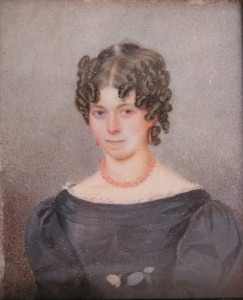
Fanny (1803-58), daughter of Richard Symes of Horsehill, married Dr Thomas Palmer Daniel in 1831, and is buried at Knowle. Through the Samways and Garlands, Fanny was distantly related to both Captain Hardy of HMS Victory and to the poet Thomas Hardy.
THE GRAVES of 23 persons are marked by ten stone tombs or monuments (others, of children and servants, are unmarked). They include those of Thomas Hine of Beaminster, Mercer, and Elizabeth his wife, daughter of James Daniel the Coroner. One of their sons, also Thomas, emigrated to France in 1793, and founded the famous Cognac House that still bears his name. Susanna Petty, who died in 1838, was one of Elizabeth’s two sisters, who married two brothers from a well-to-do yeoman family. Their nephew, Dr John Daniel, acquired in 1797 the house on Prout Bridge (now called The Walnuts) that passed down through five generations of the family, until its sale in 1996. Captain Joseph Bishop, from Chedington, married Dr John Daniel’s daughter Betsy in 1792, and lived at Northfield Farm. Sarah (died 1867) and Joseph Symes (died 1878), from nearby Horsehill in Stoke Abbott, were the sister and brother of Susan and Fanny Symes, the wives of Dr James and Dr Thomas Daniel. A possession of their family since 1686, Horsehill was left to the younger Dr Thomas Daniel, who sold it in 1914. Sarah Anne (1844-73), first wife of Dr William James Daniel, was the daughter of John May of Plymouth, and is said to have been buried here despite her wishes. The horses drawing the hearse are said to have shied as they approached the cemetery, as if confronted by her angry ghost!
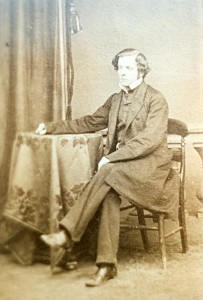
William James Daniel (1835-1909), described in the memoirs of a townsman as ‘our worthy doctor’, was educated at Ilminster Grammar School and St Bartholomew’s Hospital and was in practice from Daniel’s House. As owner of the greater part of Knowle, he completed his father’s plan for the consecration of the burial-ground, and is buried there himself.
Until the first half of the nineteenth century, the Daniels remained strict Nonconformists. They were Congregationalists, and helped to build and maintain the meeting house in the town that has now been converted into a museum. Having restored their allegiance to the Church of England, many members of the family elected to be buried in the churchyard of Holy Trinity, the town’s second church (completed in 1851), which is now disused. Knowle, however, is by no means redundant, and it is hoped that it will continue to be favoured by members of the family as a burial-place. The most recent burial here was that, in 1940, of Emily Parsons, sister of Frank Daniel, whose remains were brought home, despite wartime restrictions, from St Agnes in Cornwall.
In 2010, the P.C.C. commissioned Ben Sabran to restore some of the finer tombs in Beaminster churchyard, which had long been hidden in the undergrowth. Here are the stories behind two of those tombs …
Two worthy doctors
Tucked under the boundary wall on the south side of the churchyard, a fine altar tomb commemorates an 18th-century branch of the Daniel family. JOHN DANIEL, who ‘sweetly fell asleep’ on Monday 4 June 1781 and was buried here three days later, is described on the tomb as ‘a celebrated Surgeon of this town’, though he was also an apothecary and a grocer. Born in about 1717, he was the younger son of another John, who lived at Daniel’s House in Hogshill Street and farmed at Knowle, as their ancestors had done since at least the 14th century.
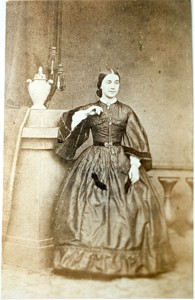
Sarah Anne (1844-73), daughter of John May of Plymouth, first wife of William James Daniel, is said to have been buried at Knowle against her wishes.
Only 4 when his father died, young John was presumably brought up by his mother, Hannah, and step-father, Thomas Bosher. Having served his apprenticeship with Thomas Northcote, Surgeon, possibly at South Petherton, he acquired a pair of houses in the Foreplace and, according to a biographical notice of his son, built up ‘an extensive practice in Beaminster’.
From a long line of Puritans – his grandfather had fought, aged 75, at the Battle of Sedgemoor against the Catholic James II – John was instrumental in building the town’s new ‘Meeting House’ for Nonconformists. It stood ‘behind a row of cottages and was approached by a narrow passage-way … both for the better protection of the fabric and for those assembled for religious services therein’. John even composed the rousing hymn (‘Now let our inward joys arise’) that was sung at its opening in 1750. It seems the doors were constantly being forced, and stones thrown at the windows, and only in 1826 was it safe to extend it to the road.
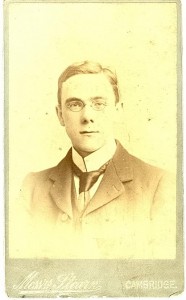
Willoughby Mason Willoughby, M.D. (1875 – 1936), who married Edith Croft Daniel in 1901. He was educated at Plymouth College, Gonville and Caius College, Cambridge and St Bartholomew’s Hospital, and became Medical Officer of Health to both the Port and City of London. Willoughby was an early advocate of cremation, arguing in an article in The Times that cemeteries were overcrowded and a health risk. Not surprisingly, there have been no Willoughby burials at Knowle.
John was highly esteemed in Beaminster, the attorney John Banger Russell describing him as ‘a very worthy, honest Man, of great Eminence in his Profession’. According to the inscription on the tomb – ending with three lines of Latin – which the erudite Russell may himself have composed, John was ‘adorned with polite literature’ and ‘remembered for probity, benevolence and piety’. His wife HANNAH, daughter of John Silvester of South Petherton, joined him in the tomb in 1785, 3 of their 6 children having predeceased them. However, their eldest son SAMUEL, born in about 1752, graduated as a Doctor of Medicine at Edinburgh in 1776. A bachelor, he sold his father’s house in 1790 and, according to the inscription on the tomb, ‘for several years practised Physik at Crewkerne in Somersetshire, where he suddenly died, highly esteemed for his humanity and integrity, on the 20th of May 1799 aged 47 years’. His burial at Beaminster, alongside his parents, occurred four days later. Also sharing the grave is HANNAH, the younger of Samuel’s surviving sisters, who married John Goulding of Netherbury in 1777, and died in 1788, aged 38.
Interestingly, John and Samuel had established a firm medical tradition in the Daniel family which continues to this day. John moreover bequeathed ‘all my stock in trade as well Grocery as Apothecary and all my Apothecary’s Shop Drawers Bottells and other utensils’ in trust to his executors, one of whom was his nephew-in-law, Thomas Hine. This may have included the old medicine chest that the Beaminster Chemist Richard Hine (Thomas’s great-grand-nephew) left in 1939 to Kathleen Pim (a Daniel descendant). Miss Pim died in 1999, having bequeathed it in turn to Beaminster Museum – housed in the former Meeting House – where it is now on display.
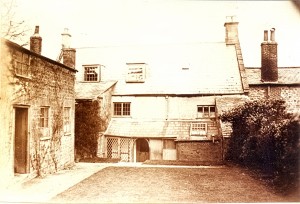
Dr John Daniel, great-nephew of the ‘celebrated surgeon’, bought this house on Prout Bridge, Beaminster, in 1797, for £300. It was originally thatched. This view of the rear of the house was taken just before it was extended in 1909. Re-named ‘The Walnuts’, it was occupied by Dr Thomas Palmer Daniel, his daughter Lottie, her husband Dr Arthur Pim and their daughters Kathleen and Evelyn. Miss Kathleen ‘Yummy’ Pim sold her share in the property in 1996, ending an association of nearly 200 years.
It may seem surprising that these Daniels were buried in the churchyard (as was their right, even as Nonconformists) and not at Knowle, where the family maintained its own private burial-ground. This had been founded by John’s grandfather James, who had hidden there after the Battle of Sedgemoor. Though John’s elder brother James, an attorney and Coroner for Dorset, was duly buried there in 1797, younger children, even those of Sedgemoor James, seem by informal convention to have been excluded. The table-tomb of the two doctors would otherwise have been a fine adornment to Daniel’s Knowle.
Clocks with painted faces
No less than 24 members of the Eveleigh family are commemorated on their tomb, which is on the west side of the churchyard. The founder, GEORGE EVELEIGH from Broadwindsor (1710 – 84), described himself as a ‘Gentleman’, but earned his living as a cutler and clockmaker, assembling the movements of both 8-day and 30-hour brass dial clocks. When the church bells were recast in 1764, George was ‘Imployed to make all the new Ironwork’. He lived in the former King’s Arms Inn in the Foreplace, on the corner of Hogshill Street, much of which miraculously survived the Great Fire of 1781. Now a restaurant, it has been considered as ‘one of the most picturesque houses in the centre of the town’.
The thrice-married George left two sons by BETTY, daughter of Edward Gerard. The younger son, WILLIAM GERARD EVELEIGH (1752 – 1817), appears to have taken over his father’s premises in the Foreplace. He was an ironmonger, cutler, locksmith, tinman, brazier, maker of edge tools (such as scythes) and finisher of Bath and Pantheon stoves, as well as making 30-hour clocks with painted faces. He married ELIZABETH (1756 – 97), daughter of Churchill and Elizabeth Rose, but no children are mentioned. When the Beaminster Loyal Town Volunteers, raised in 1798, were poised to beat off Bonaparte, William was immediately appointed one of their corporals, there being only 4 vacancies for officers.
William’s elder brother, EDWARD EVELEIGH (1747 – 94), was the father by GRACE, daughter of Thomas and Sarah Napier, of GEORGE NAPIER EVELEIGH (1779 – 1825). George married LYDIA PENNE BISHOP in 1805. She was the daughter of Joseph Bishop, of Northfield Farm (the gallant Ensign of the Volunteers), and his wife Sarah, sole heiress from her first marriage to the Penne family of Corscombe. The names of George and Lydia’s 8 children who died young are recorded on the north side of the tomb, but WILLIAM BISHOP EVELEIGH (1810 – 51) survived and lived at Knowle Cottage, which is just over the churchyard wall, near the Eveleigh family tomb.
Surrounded today by a beautiful and extensive garden, Knowle Cottage began as a relatively humble cottage on Short’s Lane and would have been known simply as ‘Eveleigh’s’. In William’s day it was extended by the addition of a substantial interlinked house to the rear, to make it a more suitable dwelling for a Victorian gentleman. By 1843 this was not William himself but his uncle Thomas Bishop (1780 – 1853), who was his tenant. Another uncle, Joseph Bishop, married into the Daniel family who owned Knowle Farm, but Knowle Cottage probably acquired its name from the land attached to it which is referred to in deeds as ‘Knowles Culverhayes’. William’s daughter Barbara, who married James Rawlins, inherited the property and lived there until her death in 1884, when it was sold, for she was the last of the Beaminster Eveleighs.
Rupert Willoughby 2010
